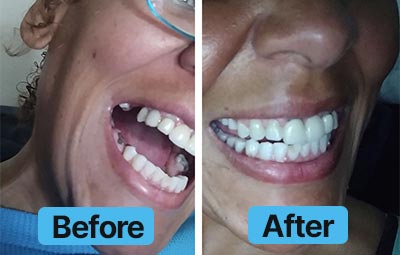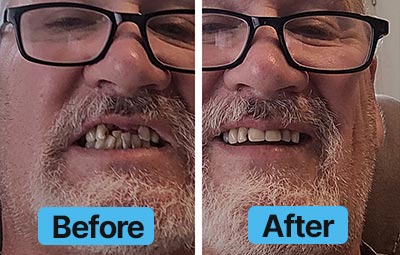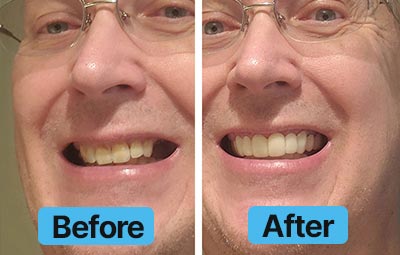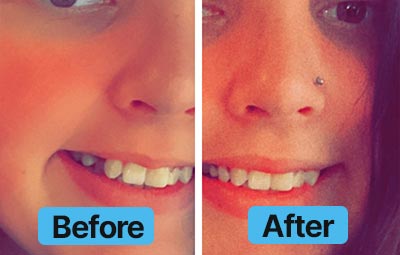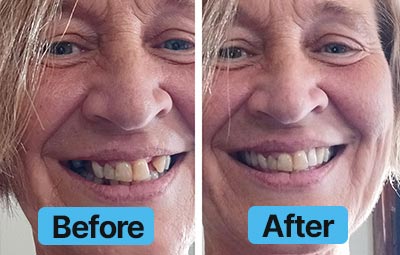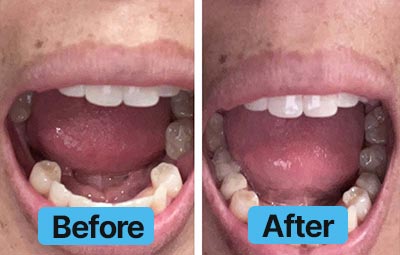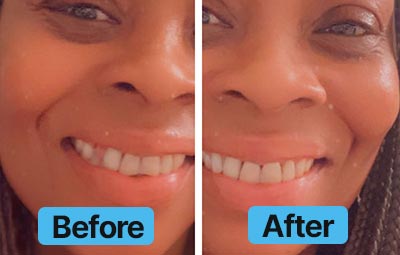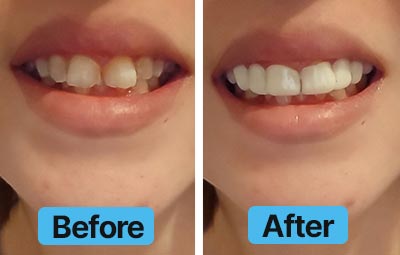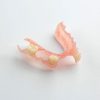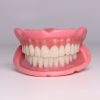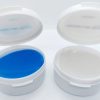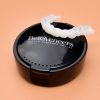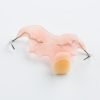Losing a tooth as an adult is an alarming experience. Unlike losing a tooth as a child, when all you need to do is eagerly await the tooth fairy, losing a tooth as an adult requires immediate dental care and long-term changes to your mouth.
Although losing a tooth as an adult is scary, there’s no need to panic. Nowadays there are many tooth-replacement options that mimic natural teeth and provide long-lasting, functional solutions. From implants to bridges, to dentures, your dentist will help guide you towards finding the best solution for your needs and lifestyle.
Immediate Response
First, let’s talk about what to do immediately after losing a tooth. Whether your tooth is dislodged by eating hard or sticky foods or knocked out in an accident, swift action is necessary to yield the best results.
- Don’t panic. Remember, you have many options for tooth repair or replacement.
- Collect the missing tooth and rinse gently with water. Try to hold the tooth using only the crown end, and avoid touching the roots. Do not scrub or brush the tooth.
- If possible, place the missing tooth back into your mouth exactly where it was before falling out. Although this may seem counterintuitive, putting your tooth back in your mouth protects the root, and is the best way to preserve your tooth for repair. Bite down lightly on gauze or a cotton ball to hold the tooth in place while you seek immediate dental care.
- If you can’t place the tooth back in your mouth, place it in a glass of salt water or milk. These substances are better at preserving the root than regular water.
- Avoid eating, drinking, or taking medications. Depending on the nature of your tooth loss, your dentist might need to sedate you and it’s best not to have other medications in your bloodstream.
- Seek dental care as soon as possible. The longer you wait, the less likely it will be for your dentist to save your tooth.
Don’t Ignore a Missing Tooth
For some people, losing a tooth isn’t necessarily a traumatic and bloody incident. Long-term issues due to underlying health conditions may cause teeth to loosen over time and fall out. But although the incident may seem like no cause for alarm, it’s still necessary to address missing teeth to protect your overall health.
Increased Risk of Decay
Losing a tooth exposes neighboring teeth and gums to bacteria. When you lose a tooth, the underlying gum is at a higher risk for gum disease due to exposure. Additionally, when you lose a tooth it’s common for neighboring teeth to shift or lean into the gap. This makes flossing more difficult and may cause a buildup of bacteria in hard-to-reach areas.
Misalignment
Teeth literally lean on one another to remain upright and strong. Losing a tooth destabilizes the neighboring teeth, and can even lead to bone loss in the jaw. As teeth shift over time, the result may alter your smile, and lead to issues with your bite alignment.
Bone Loss
A missing tooth may lead to an increased risk of bone loss. When healthy, your teeth stimulate jaw bone growth. Losing a tooth leads to bone loss over time, which may cause structural issues or even change the shape of your face.
Understand Your Replacement Options
If your dentist is unable to save your original tooth, you can still have a healthy and full smile. Depending on the nature of the tooth loss, the number of teeth you need to replace, and the condition of your neighboring teeth, there are several tried and true methods for replacement. Remember, there is no “best” method for replacement since every case is unique.
Dental Implants
Dental implants are a permanent solution that offers long-term stability and functionality. The implant process begins by surgically inserting a metal screw into the jaw bone. The post-op healing process takes six to twelve weeks, during which the jaw bone grows around the insert, creating a stabilized base for the implant crown.
Once the implant has healed sufficiently, an abutment is attached to the implant post, and a realistic crown is secured on top. Dental implants should look, feel, and function like natural teeth. Unlike other solutions, implants are permanent and don’t need any special care apart from routine brushing and flossing.
Dental Bridges
Traditional dental bridges are less invasive than implants but offer a more permanent solution than dentures. Bridges literally “bridge” the gap between teeth using a replacement tooth (or teeth) to fill the empty space. To install the replacement, crowns are attached to the teeth on either side of the gap and the bridge is anchored on each side. The tooth replacement fills the gap and is held securely in place by the crowns. Dental bridges are best suited for patients who have healthy teeth on either side of the gap.
Dental bridges typically yield faster results than implants since there isn’t as much healing time required. Once installed, caring for your dental bridge is similar to caring for natural teeth. Be aware that you may need to use special “threading” floss to clean around the bridge since regular floss won’t work. When cared for properly, bridges should last for years without needing to be replaced.
Dentures
Dentures are perhaps the most widely used and cost-effective option to replace missing teeth. Depending on the nature of your tooth loss, you may be a candidate for either partial or full dentures. Full dentures fit into the mouth like a retainer and hug the gumline, staying in a place with the help of special denture glue. As their name suggests, full dentures are designed to replace a full row of teeth. Full dentures are only a viable choice if all your teeth are missing.
Partial dentures are a fantastic option to replace one or several missing teeth. Made out of a flexible acrylic material, partial dentures hook around neighboring teeth like a retainer and fill in gaps with realistic, color-matched replacement teeth. Partial dentures are a great short-term solution for folks waiting for implants to heal. In addition to being cost-effective, partial dentures are easy to clean, painless to use, and should last for years with proper care.
Finding an Easy Solution for Missing Teeth with Dental Lab Direct
Skip the trip to the dentist’s office and instead enjoy the convenience of high-quality dental appliances delivered straight to your home. At Dental Lab Direct we offer a variety of custom-made dental appliances, ranging from bite guards to retainers, to partial dentures. Our custom appliances are made with FDA-approved materials and designed to fit seamlessly into your smile.
At Dental Lab Direct, we believe that high-quality dental care shouldn’t compromise when it comes to convenience and cost. That’s why our three-step ordering process makes acquiring your custom appliance a piece of cake. Once you’ve received our impression kit in the mail, simply follow the directions to make an impression of your teeth and send the kit back to us. Once received, you can expect your new appliance to arrive in just a few weeks. Not happy with the fit? Our 60-day satisfaction guarantee means that you never need to compromise your comfort.
Take charge of your smile, and experience the convenience and quality of Dental Lab Direct today!
 30 DAY warranty on all custom-made products | 1,000+ 5 Star ★★★★★ Reviews
30 DAY warranty on all custom-made products | 1,000+ 5 Star ★★★★★ Reviews

